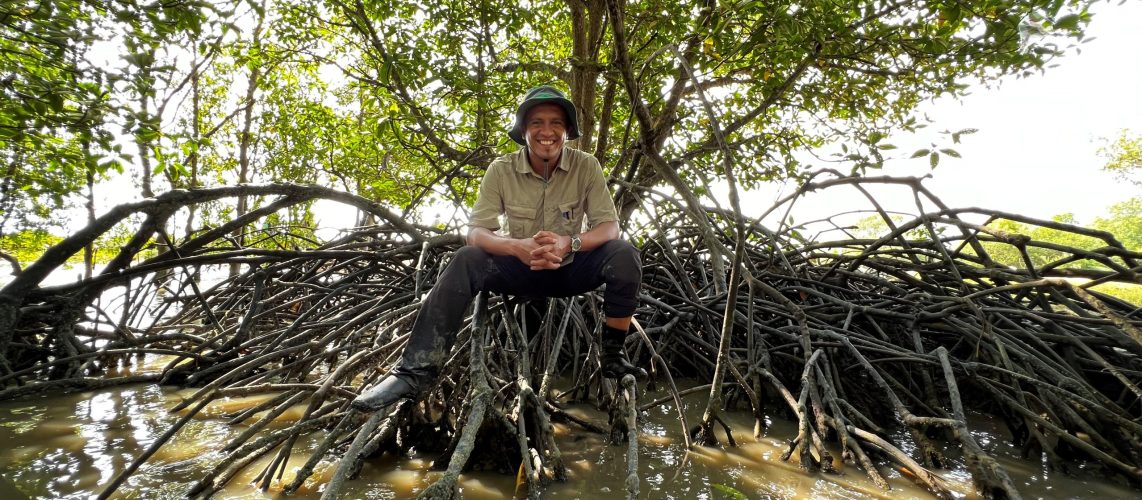This article has been published in the New Straits Times on 29th December 2018
THE recent tsunami in Banten, Indonesia reminded us of the tsunami that happened exactly 14 years ago on Dec 26, which had devastated many countries bordering the Indian Ocean. Many villages on the northwest coast of Peninsular Malaysia, too, were badly affected, and most of the survivors are still being haunted by vivid memories of that catastrophic event.
The 2004 catastrophe in one way drove home the lesson that Malaysia was not entirely safe from geological disasters. More importantly, the killer waves also taught us the importance of mangroves as they have been proven to blunt the destructive force of tsunamis.
Realising this, Malaysia embarked on a mission to rehabilitate mangrove and coastal forests throughout the country’s coastlines. A special annual budget has been continuously allocated for this mission and many rehabilitated areas along the coasts have seen much improvement since the launch of the programme in 2005.
The issue is, however, not only about the success of the rehabilitation programme, but also the legal protection and sustainability of the existing and the rehabilitated mangrove habitats.
Sadly, mangrove forests in Malaysia are not totally protected. Although large areas of mangrove forests are gazetted as forest reserves under the management and enforcement of the Forestry Department, some other significant and sizeable areas are still categorised as state lands and privately owned lands. These unprotected areas are all earmarked for various development plans. Herein lies the Malaysian challenge.
Mangrove forests are a subject of a number of international treaties: the Ramsar Convention on Wetlands, the Convention on Biological Diversity, the United Nations Framework Convention on Climate Change and the United Nations Educational, Scientific and Cultural Organisation conservation programmes such as the World Heritage Convention, Man and Biosphere and Global Geoparks Network.
Malaysia, too, is committed to these global treaties.
Being one of the most prominent tropical coastal wetlands, many mangrove forests around the globe are designated as Ramsar sites under the Convention on Wetlands of International Importance or better known as the Ramsar Convention. The convention was adopted in the city of Ramsar in Iran in 1971. It came into force for Malaysia in 1995 after the designation of Tasek Bera in Pahang, a freshwater lake ecosystem, as our first Ramsar site in 1994.
To date, Malaysia has designated seven Ramsar sites. The other six Ramsar sites are mangrove forest habitats of different types: Pulau Kukup in Johor (overwash mangroves), Tanjung Piai in Johor (fringe mangroves), Sungai Pulai in Johor (riverine mangroves), Kuching Wetlands National Park in Sarawak (riverine mangroves), Lower Kinabatangan-Segama Wetlands in Sabah (riverine mangroves), and Kota Kinabalu Wetland in Sabah (basin mangroves).
Ramsar Convention recognises the international importance of all types of natural wetlands on the terrestrial and marine zones. It also recognises the importance of constructed wetlands, in which 795 sites around the world have made the list.
All in all, the ultimate aim of the convention is to promote the conservation of wetland habitats.
Ramsar sites in Malaysia are being conserved through different models and approaches, and managed by different authorities and agencies as land is a matter within the state jurisdiction.
Recently, Pulau Kukup was in the news as to its status as a national park. Regardless of the land status, the fragile mangrove island of Pulau Kukup must be protected and equipped with a robust conservation plan incorporating all relevant policies and laws. The status of Pulau Kukup as a Ramsar site should remain as this is in actual fact a global brand name to attract and promote sustainable tourism for Johor and Malaysia.
It is best for all parties to agree and work collaboratively to protect the pristine mangrove island of Pulau Kukup as it is a precious ecosystem shared by local and global communities. The oxygen they release and the carbon they sequester are just some of the key roles that the mangroves of Pulau Kukup play.
In addition, Pulau Kukup is recognised as one of the most important key biodiversity areas, especially as a habitat for at least 35 species of mangrove plants, and home to myriads of fauna, particularly as an important stopover for migratory birds. This is on top of its role in coastal protection and stabilisation, and in reducing the risks from hydrological and meteorological hazards and disasters.
While Malaysia’s goal to become a developed nation must be welcomed, it must not be achieved at the expense of our rich biodiversity. And this includes our mangrove forests.
We must save them. Only then, will they save us from the wrath of the natural forces.
The writer is a senior lecturer/research fellow of Institute for Environment and Development and Universiti Kebangsaan Malaysia coordinator of The Malaysian Mangrove Research Alliance and Network (MyMangrove)
